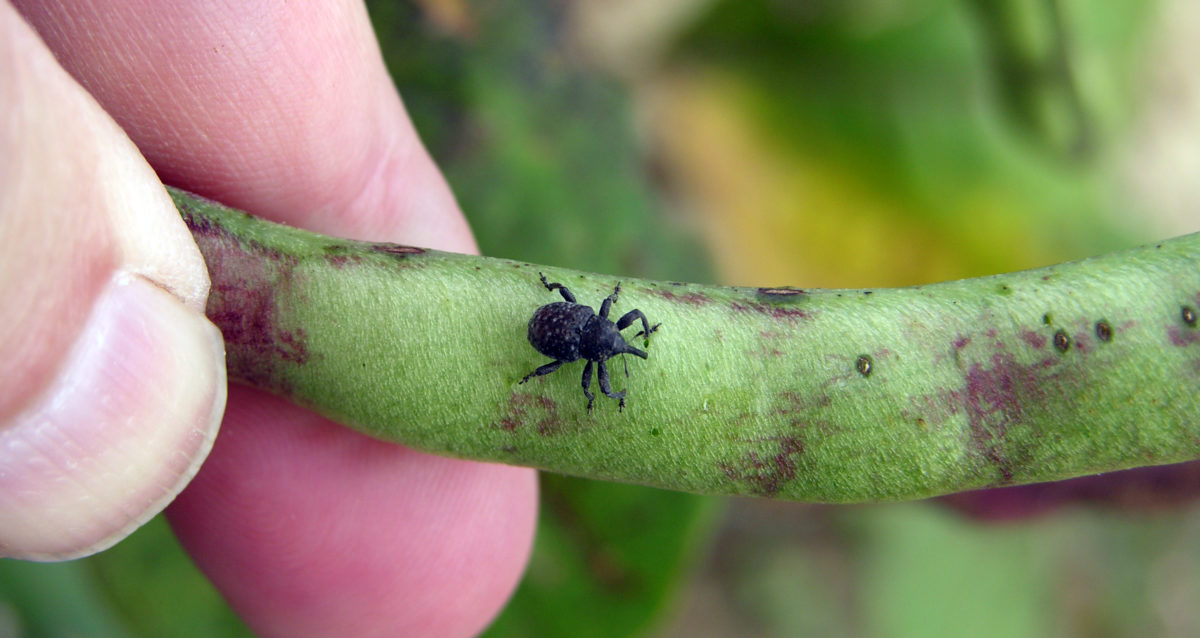By: Brad Buck, bradbuck@ufl.edu IMMOKALEE, Fla. — Kim Morgan is coming home, in a manner of speaking. Morgan graduated from the University of Florida three times. Mostly recently, she began her position as an associate professor of food and resources economics for the UF/IFAS Southwest Florida Research and Education Center in Immokalee. For now, due to CDC stay-at-home guidelines, Morgan …
Florida Blueberry Farmer: USMCA Not a Good Deal For Vegetable, Specialty Crop Producers
By Clint Thompson One of the most vocal critics of Mexican imports into the U.S. is adamant that the United States-Mexico-Canada Agreement will not help or protect vegetable or specialty crop producers. “No, that’s not a good deal for specialty crops. They didn’t really address our issues at all. That was not a good deal for us,” said Ryan Atwood, …
Clemson Extension Agents Provide Crop Updates
According to The South Carolina Grower, Clemson Extension agents provided updates on the status of fruits and vegetables throughout the state. In the Coastal area, Zack Snipes reports: “A week of unseasonably mild temperatures and damp conditions slowed things down a bit. The warmer weather this past weekend and this week should put things in gear again. Tomato spotted wilt …
Potential Second Wave of Pandemic Could Impact Vegetable, Specialty Crop Producers
By Clint Thompson The coronavirus pandemic struck in mid-March during harvest season for vegetable and specialty crop growers in the Southeast. Many fear a second wave of COVID-19 could strike again in October and November when temperatures start to drop. It is also when many producers have their fall crop in the ground. “The specialty crops would be where maybe …
NOFA Deadline for CFAP is Today
By Clint Thompson Today, June 22, is the last day for growers and industry leaders to submit information and data to the USDA Farm Service Agency (FSA) about crops to be considered for inclusion in the Coronavirus Food Assistance Program (CFAP). There is a Notice of Funding Availability (NOFA) where stakeholders and producers of other commodities can submit information and …
Cowpea Curculio Consistent Problem of Southern Peas
According to Alabama Extension, southern peas are commonly grown crop in the Southeast. Peas have many different pests such as aphids, thrips, leaf-footed bugs, stink bugs, and various caterpillar species. However, the one pest that causes growers the most trouble is the cowpea curculio. There are control remedies for most of these other pests, but the cowpea curculio has become …
Start Work Now on Worker Protection for Next Season
Paul Allen, chairman of the Florida Fruit and Vegetable Association, encourages farmers to prepare now for next growing season with respect to worker safety. FFVA strongly urges every grower and farm labor contractor to implement these measures to the utmost of your ability. Download the checklist, review it, print it out and begin working now to designate a workplace coordinator …
Downy Mildew Found on Watermelon in South Carolina
According to the The South Carolina Grower, downy mildew disease was found Wednesday in one watermelon field in Bamberg County, South Carolina. Justin Ballew, Clemson Extension commercial horticulture agent, said all growers should immediately spray watermelon with Ranman, Revus, or Gavel to protect their crops from the disease. In addition to direct yield loss, loss of vine cover can expose …
UF Professor Earns Award From UF/IFAS Extension Peers
By: Ruth Borger, 517-803-7631, rborger@ufl.edu LAKE ALFRED, Fla. — Water is essential to Florida farmers. They scrutinize the amount available, its quality and when and how they should use it to grow crops, feed animals and sustain their livelihood. University of Florida soil and water sciences assistant professor Davie Kadyampakeni works tirelessly with Florida citrus growers to ensure that they …
Alabama: A session unlike any other
Alabama: A session unlike any other By Ashley Robinson Alabama lawmakers have never seen a legislative session like the one that took place this year. The coronavirus (COVID-19) pandemic forced lawmakers to end Alabama’s 2020 legislative session early, causing several issues to fall by the wayside. Legislators took a nearly two-month break during the COVID-19 outbreak, returing to Montgomery on …










